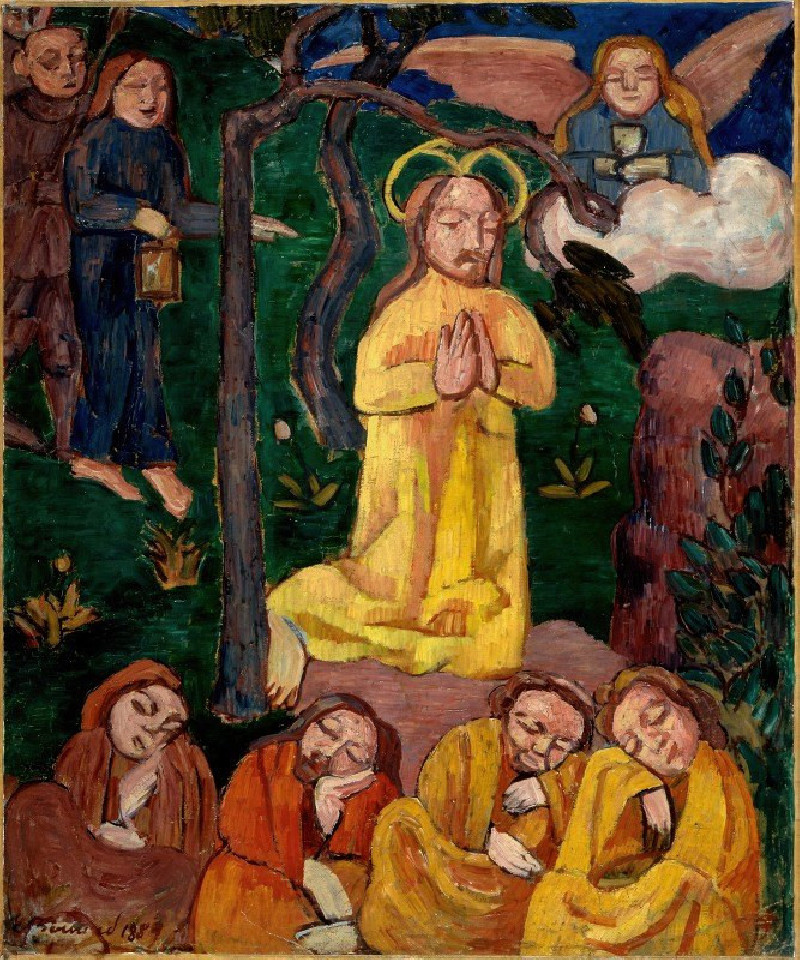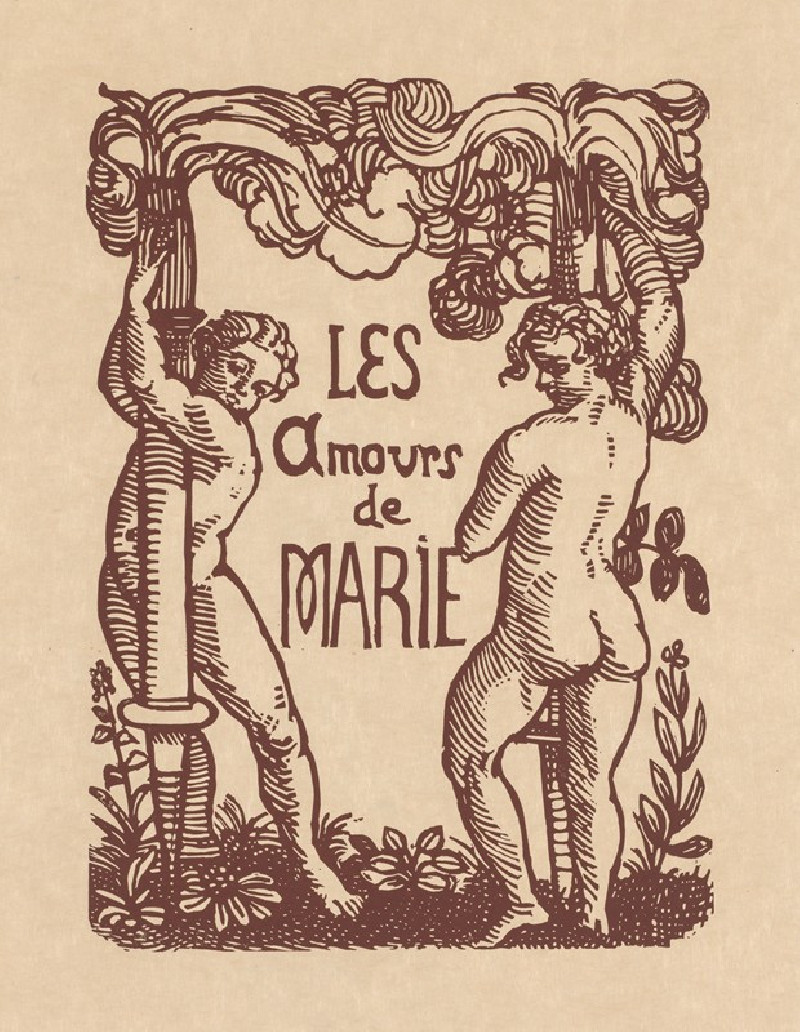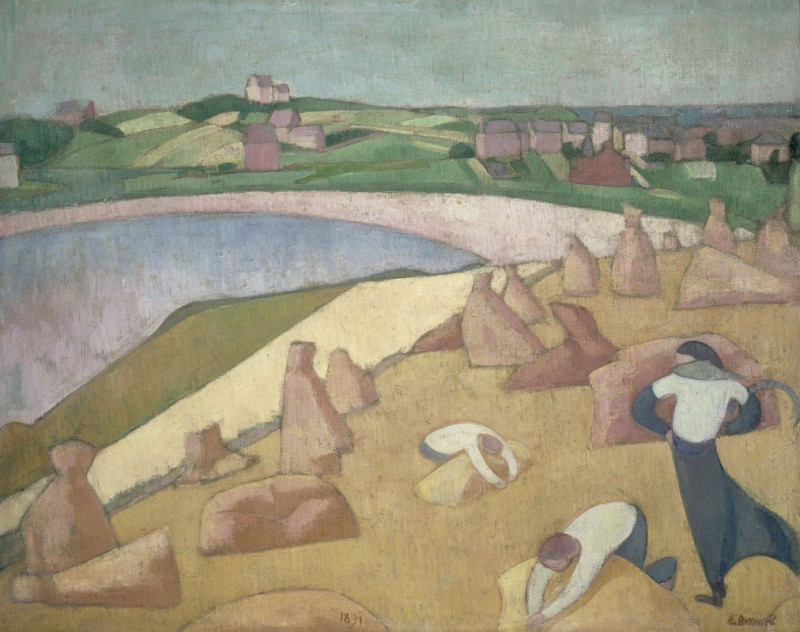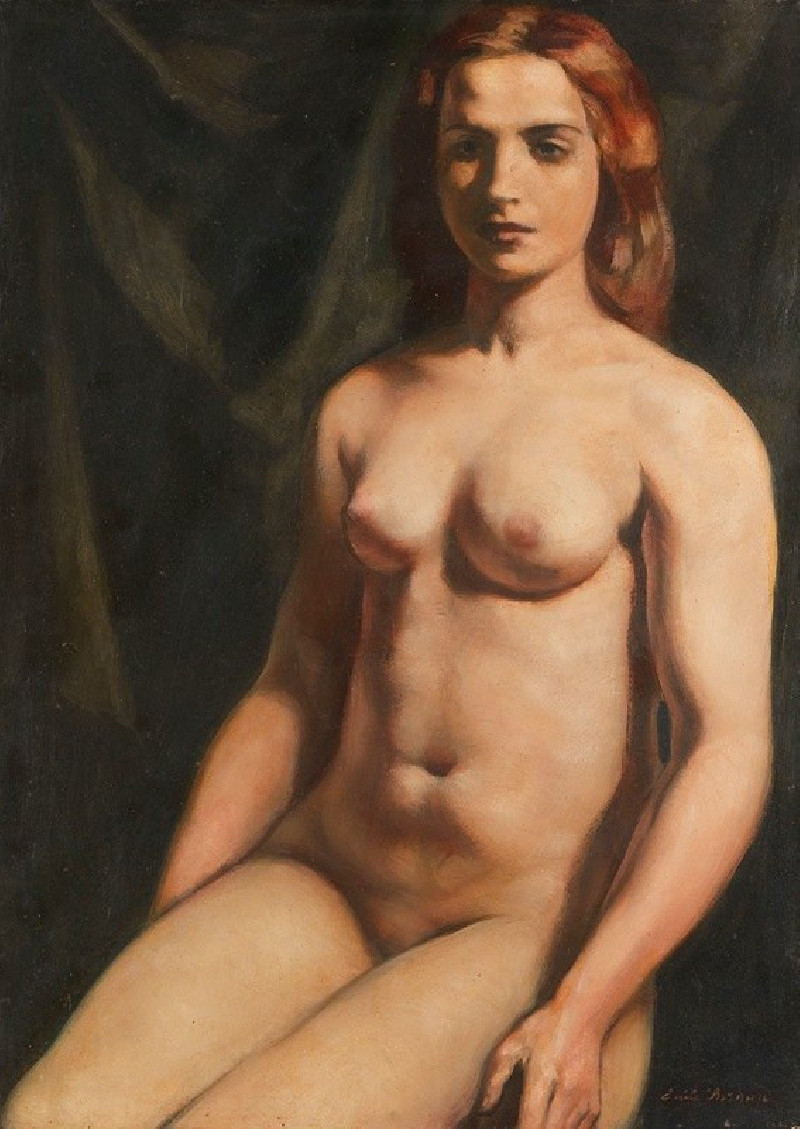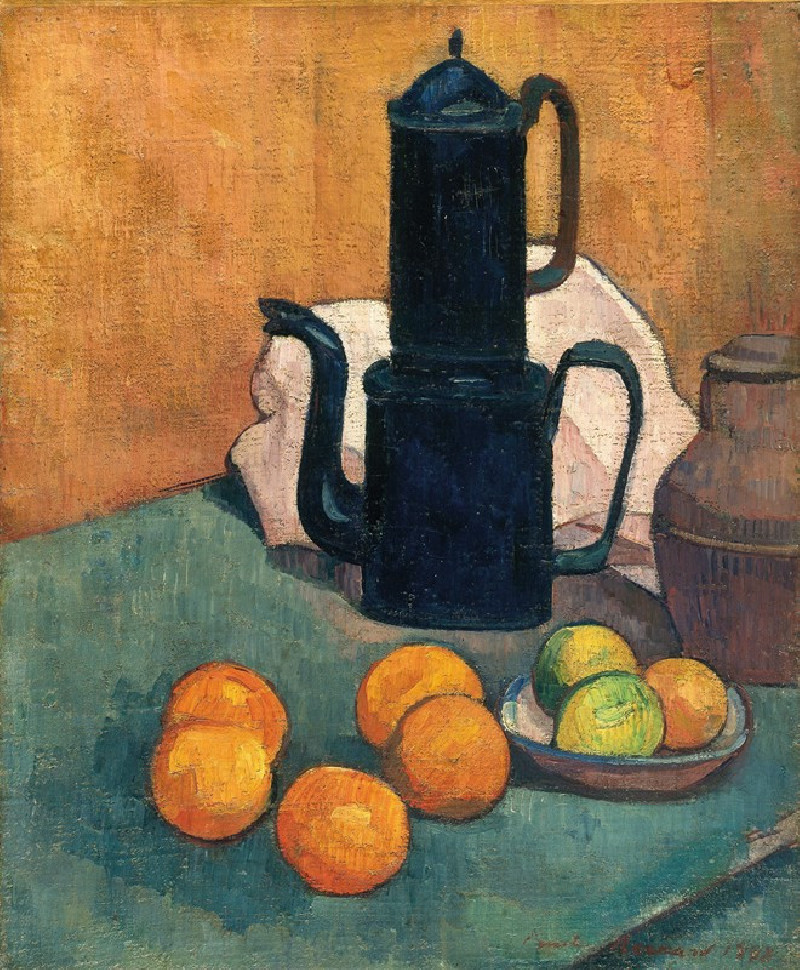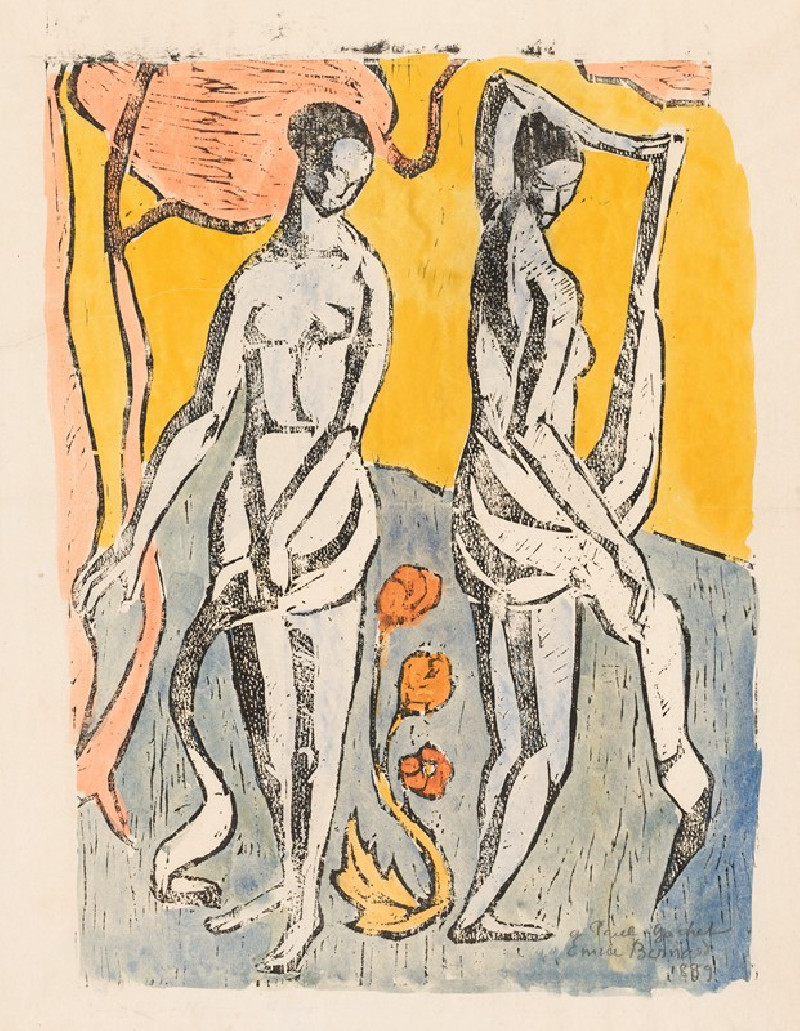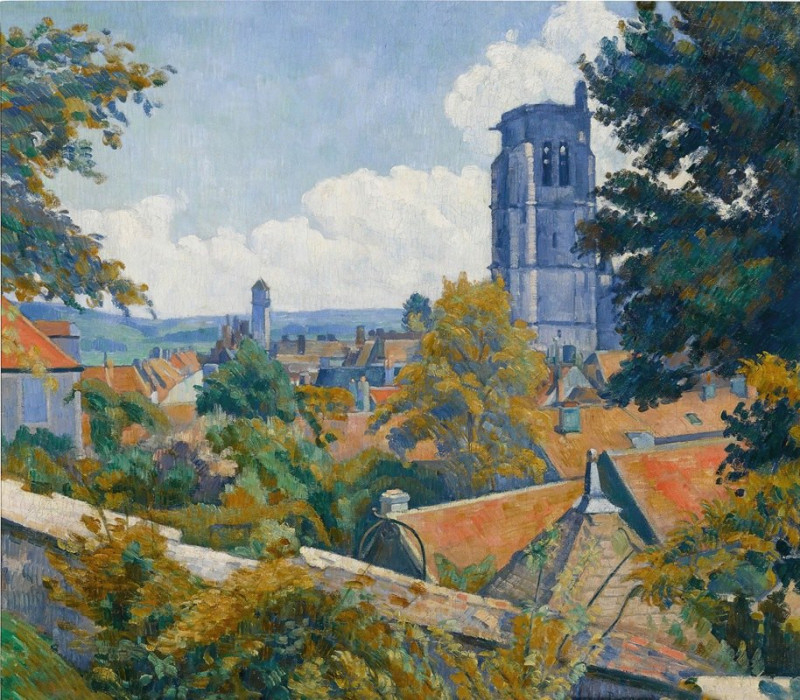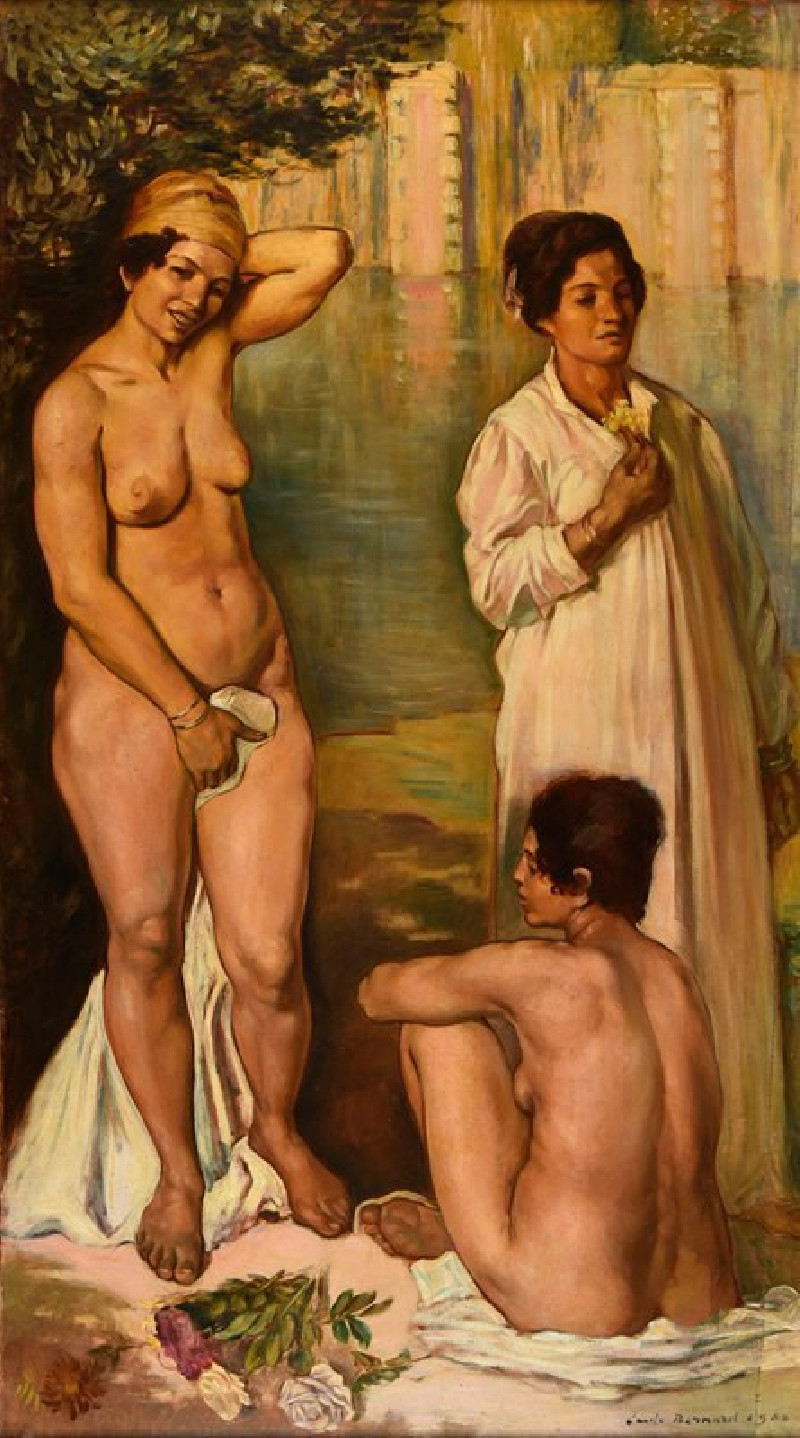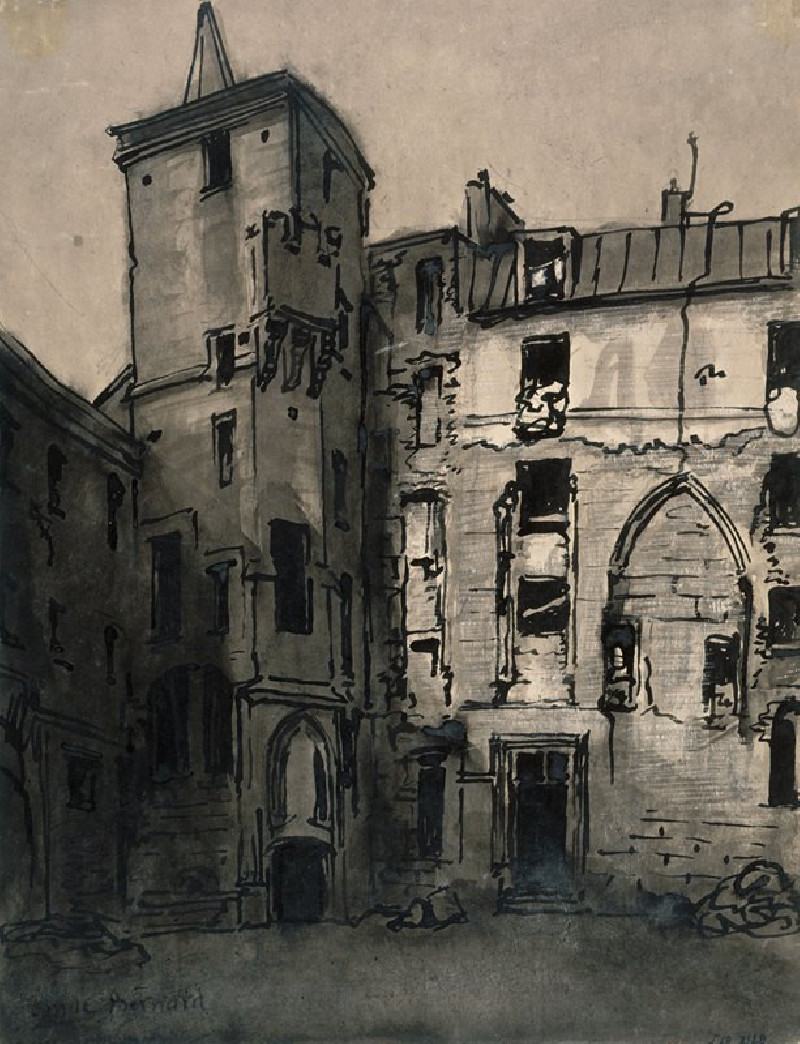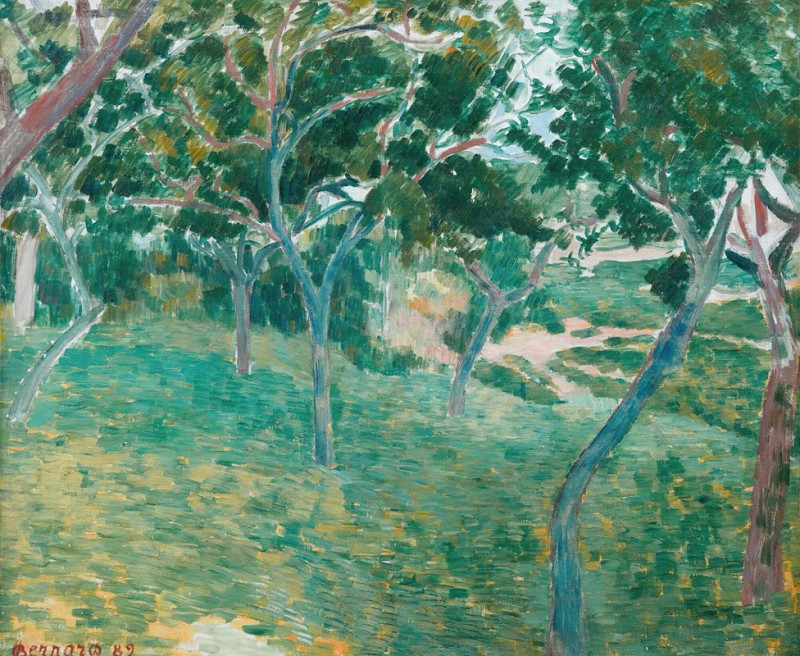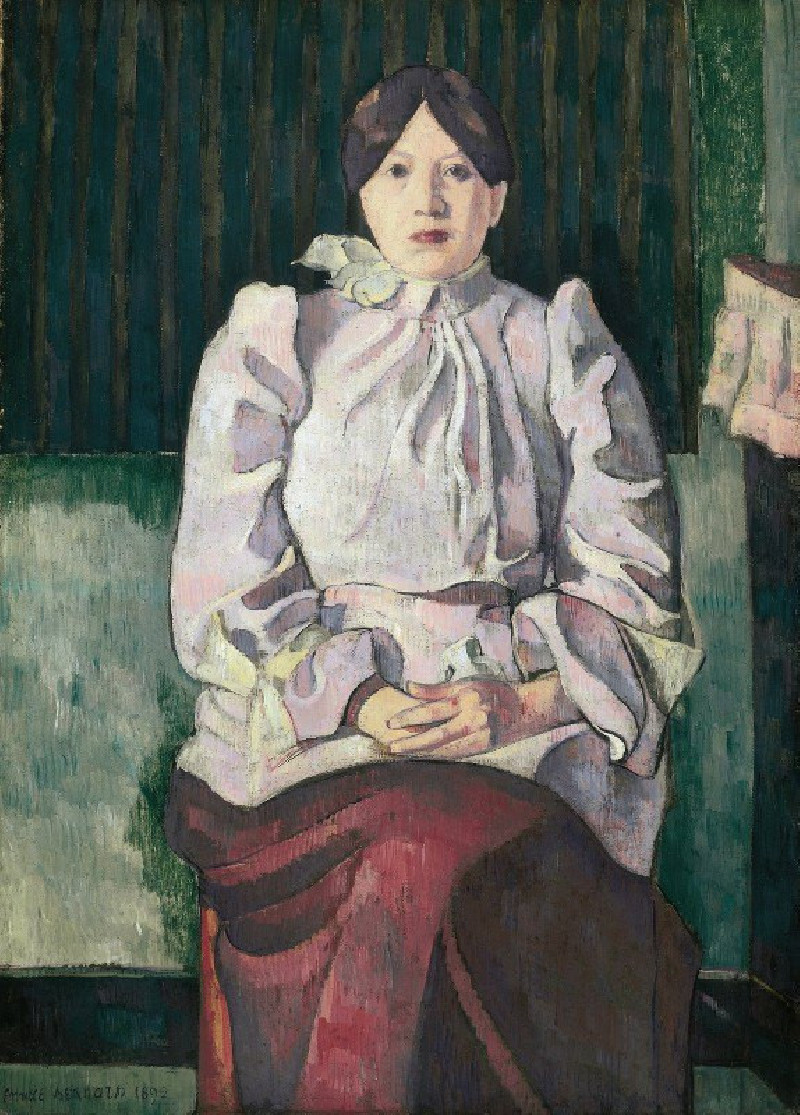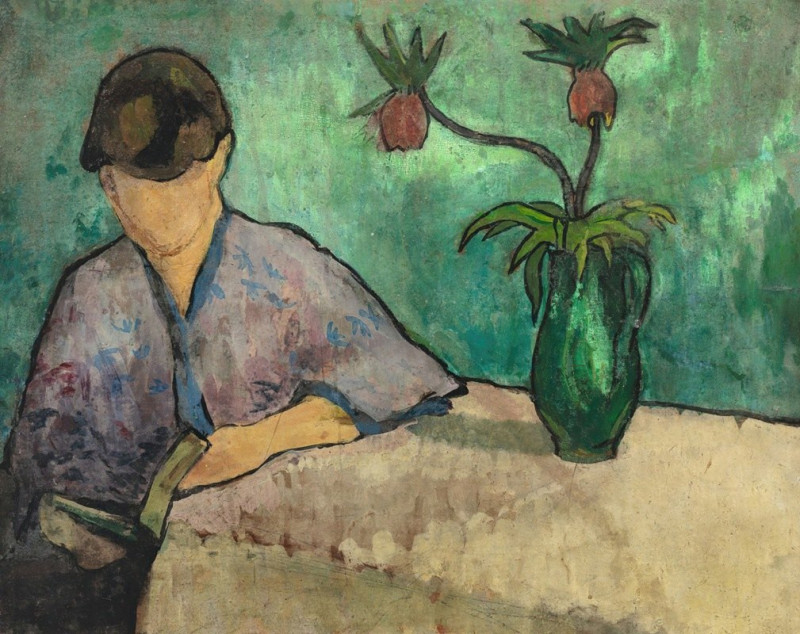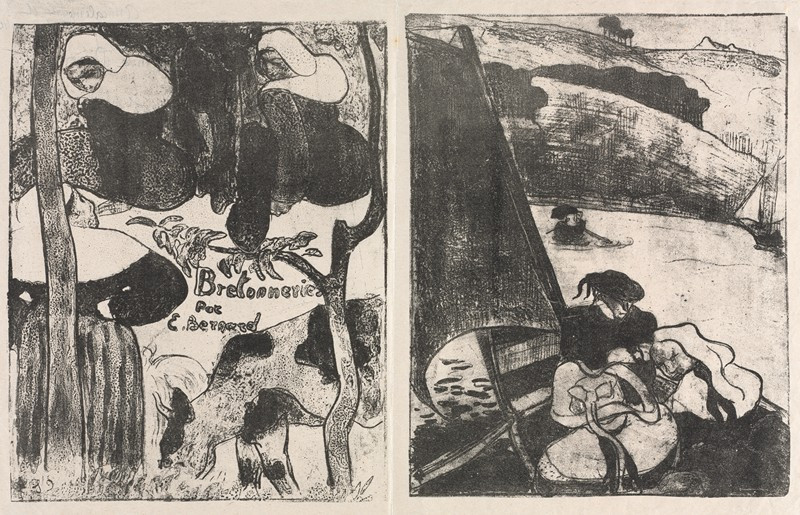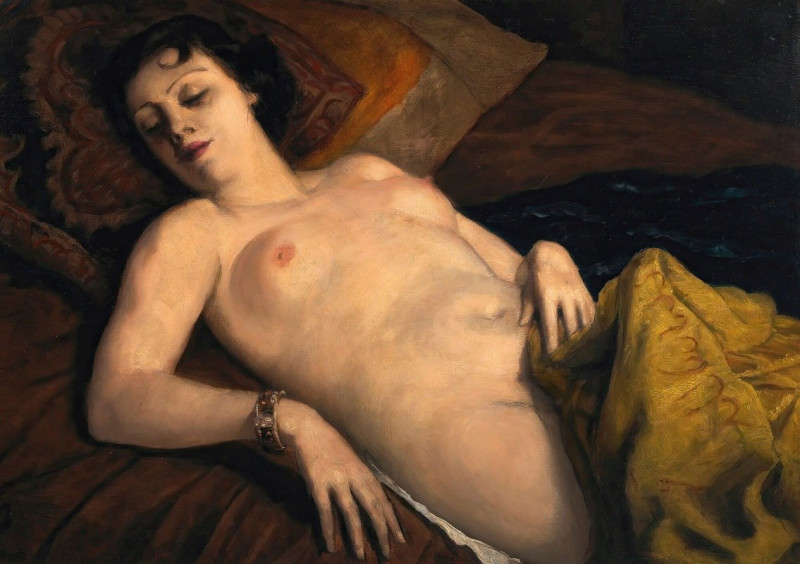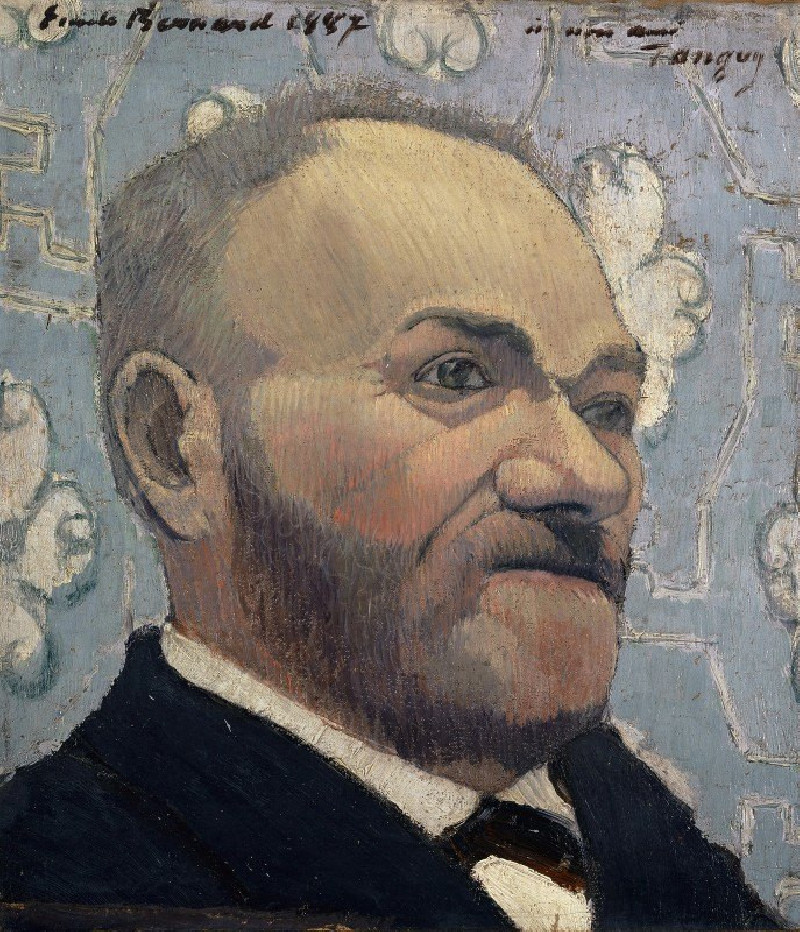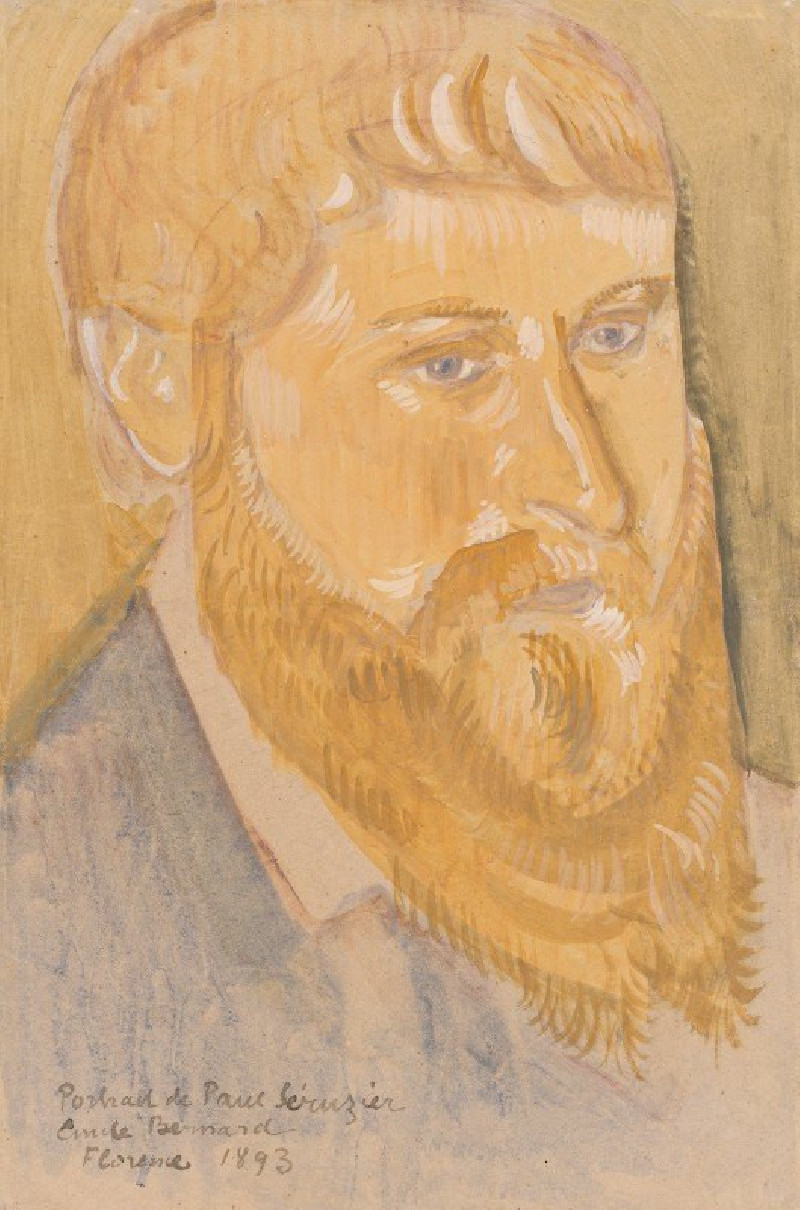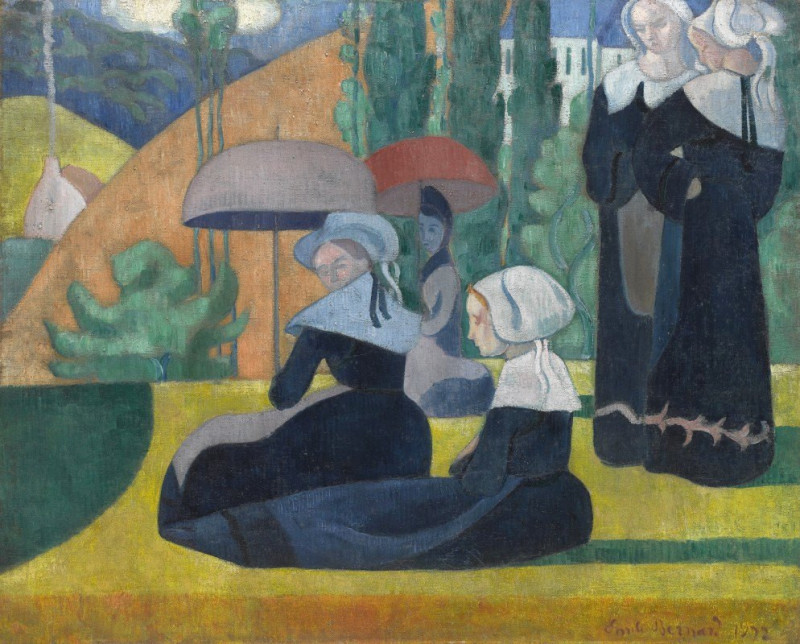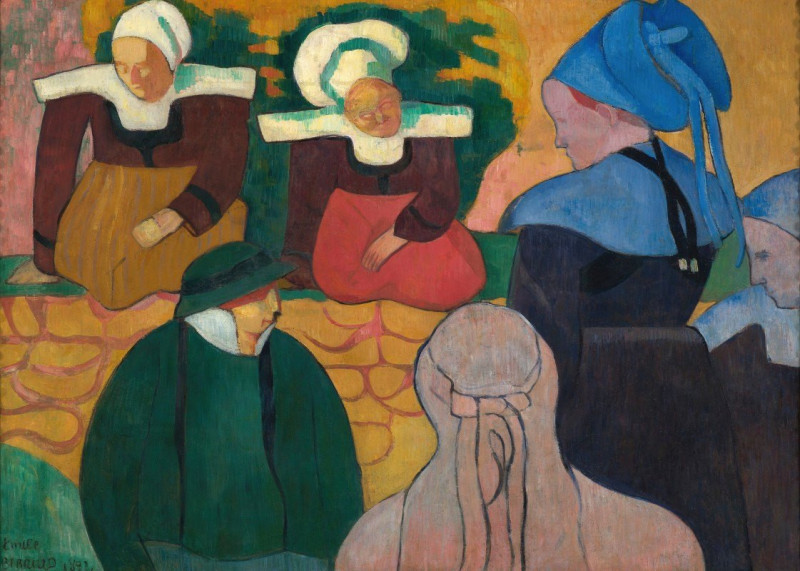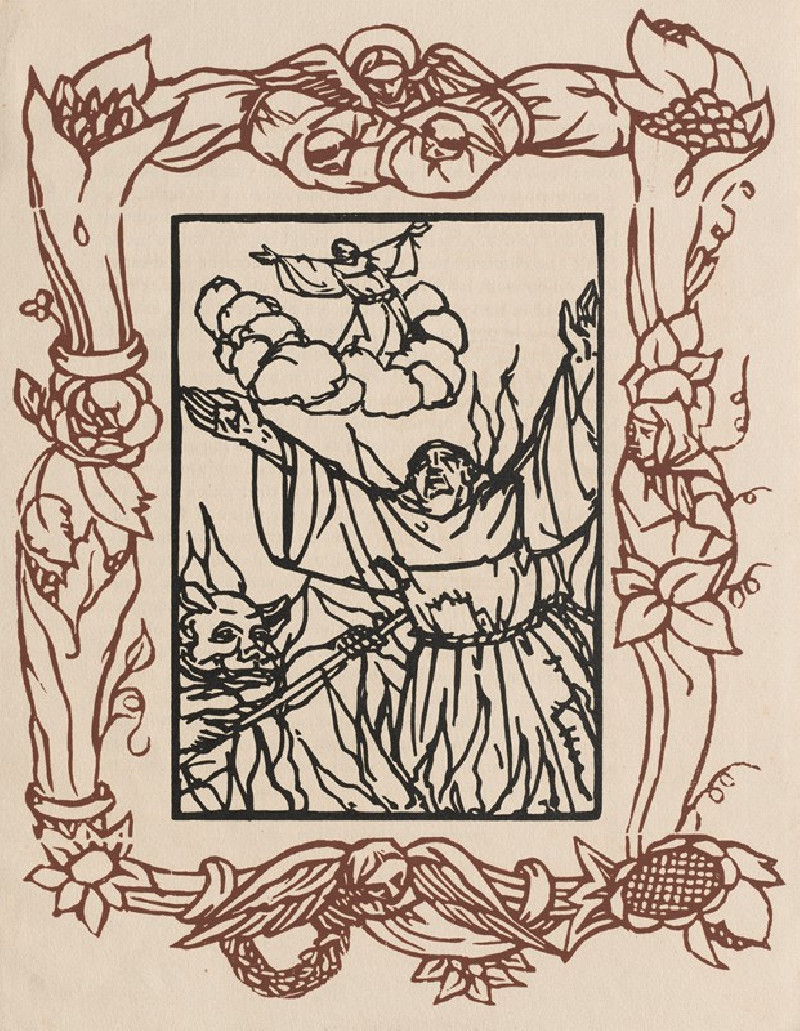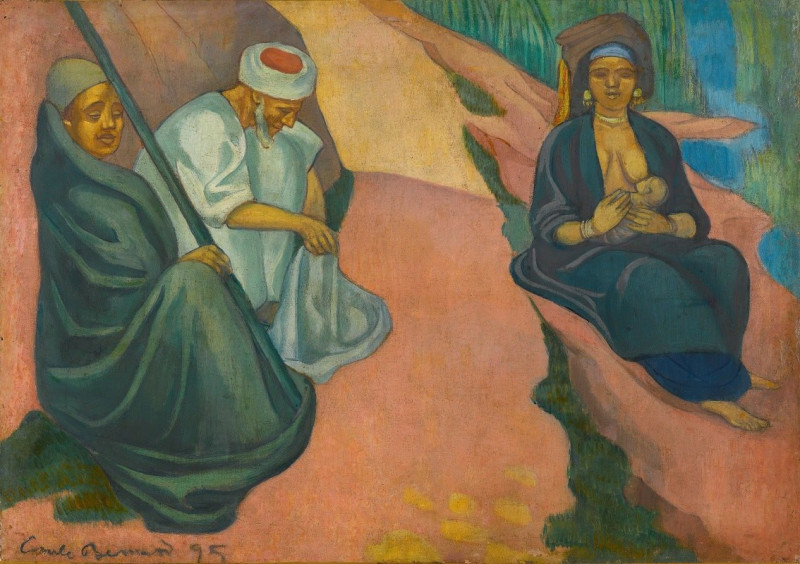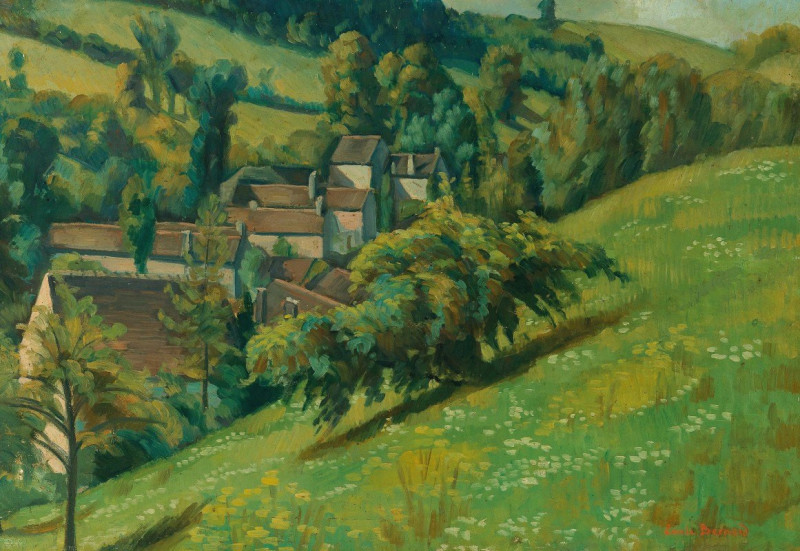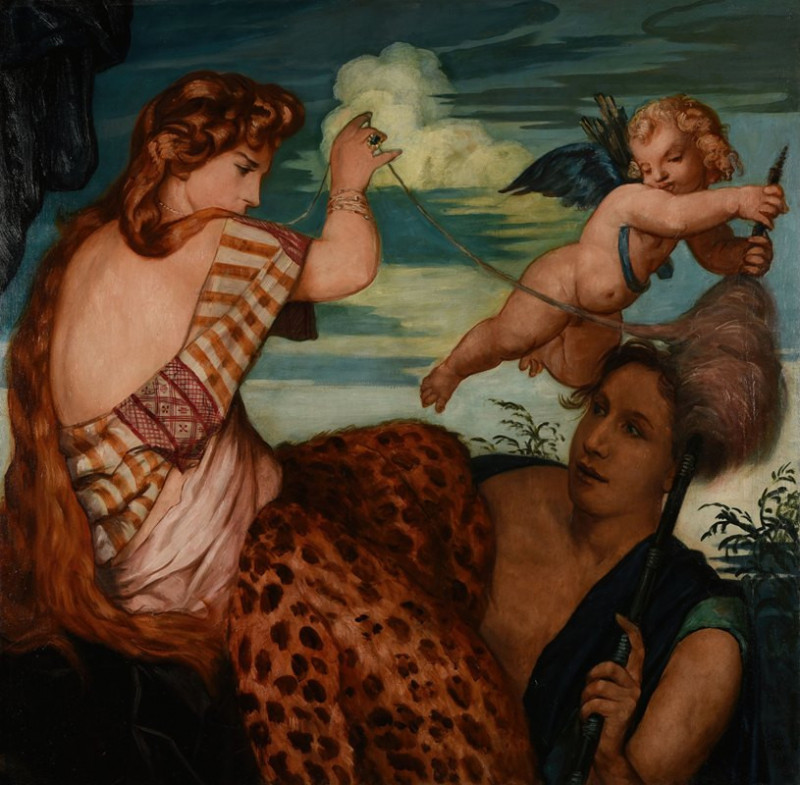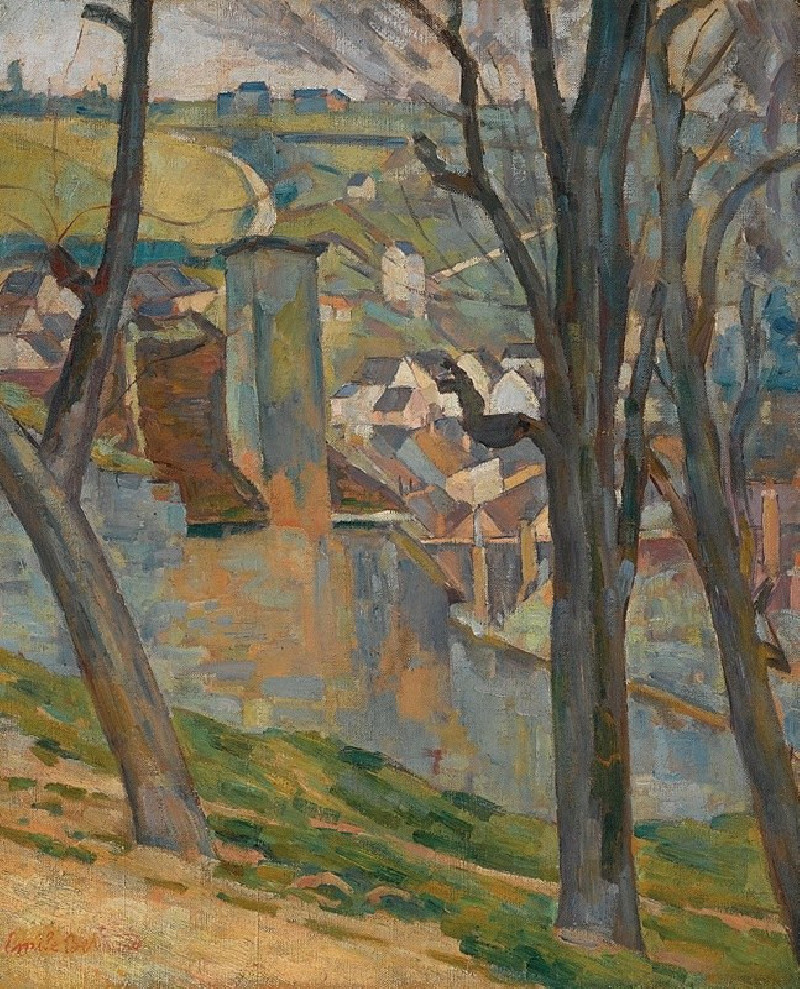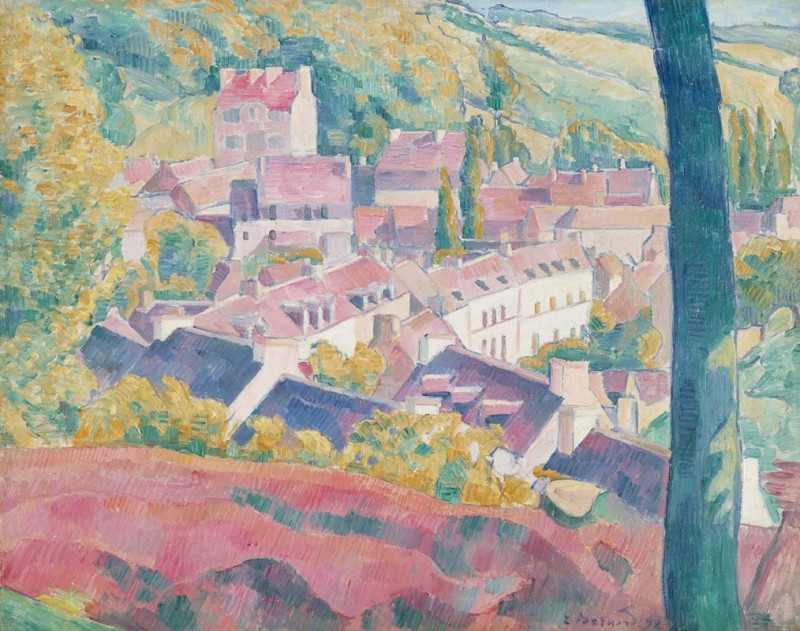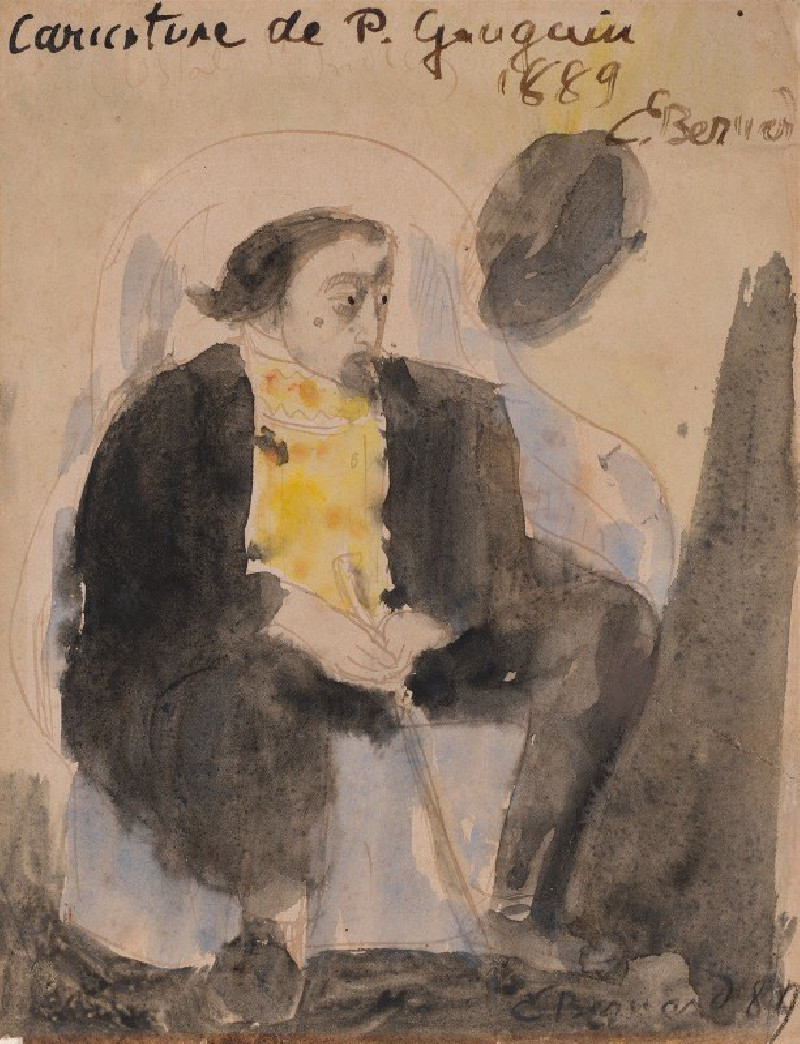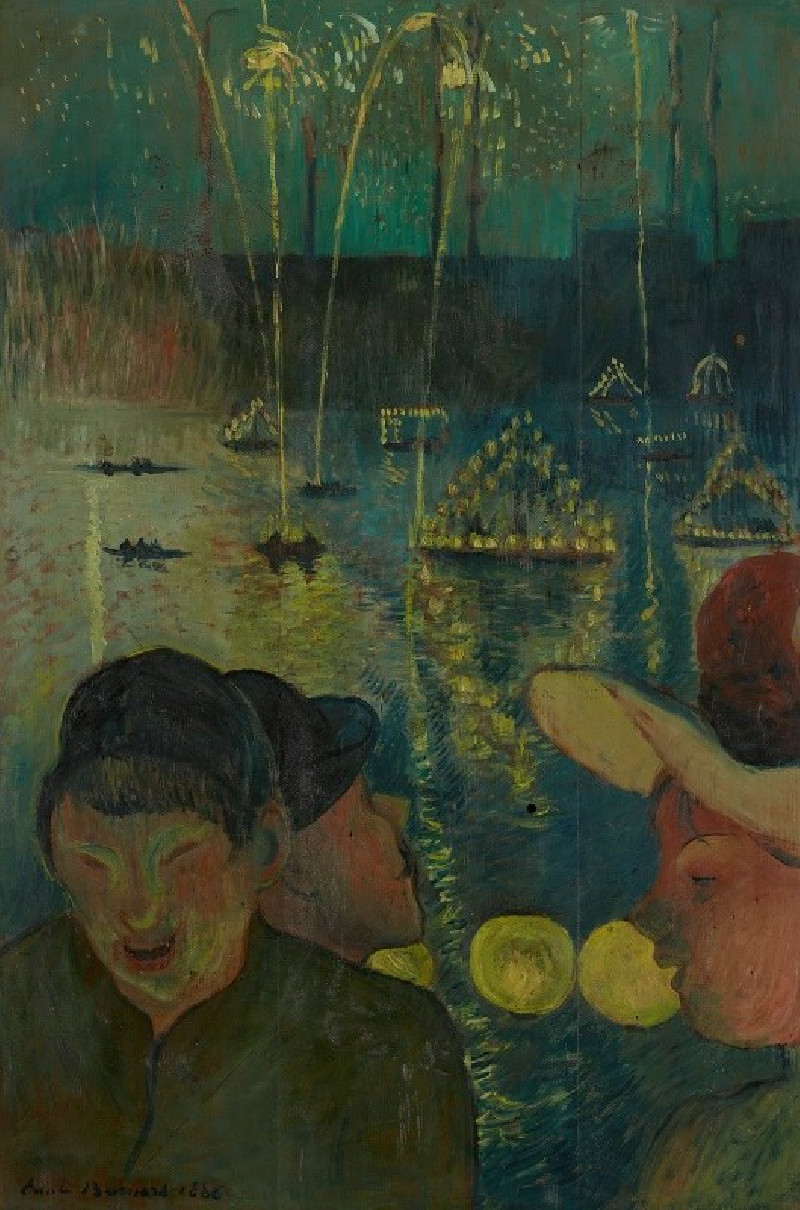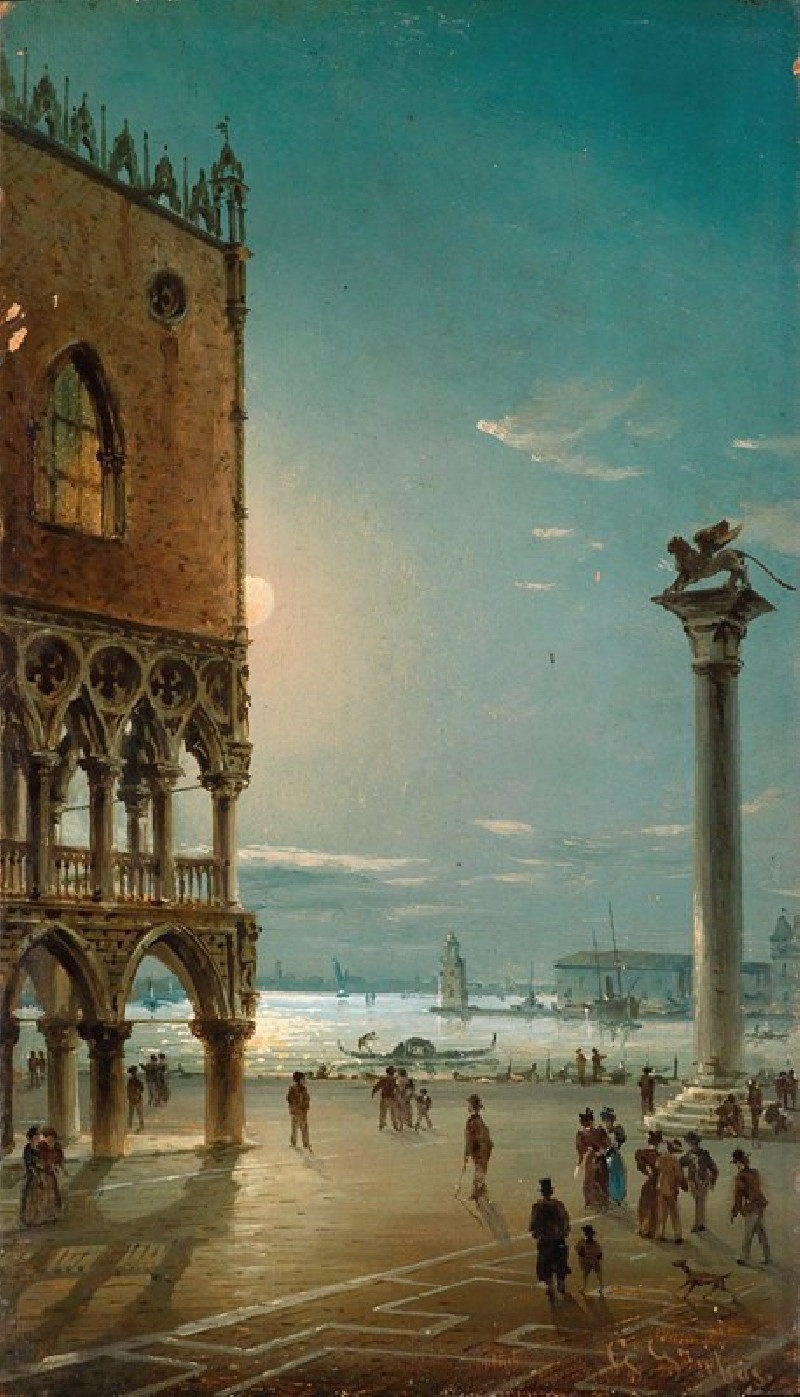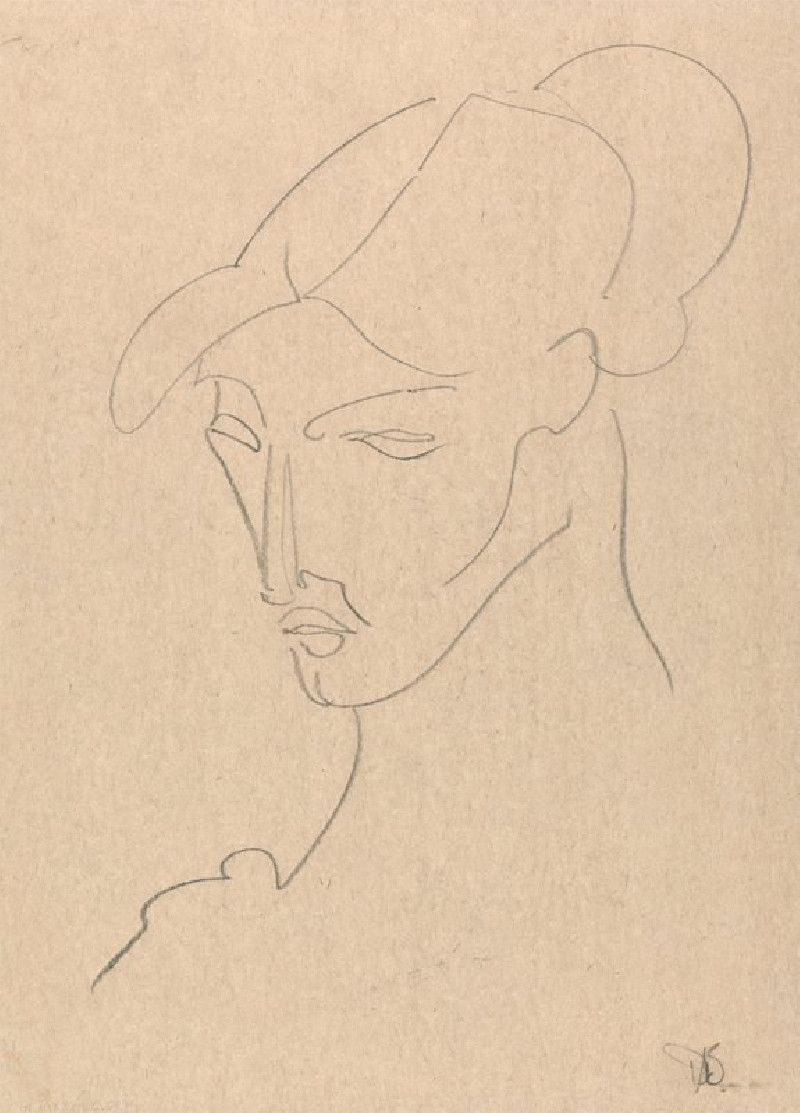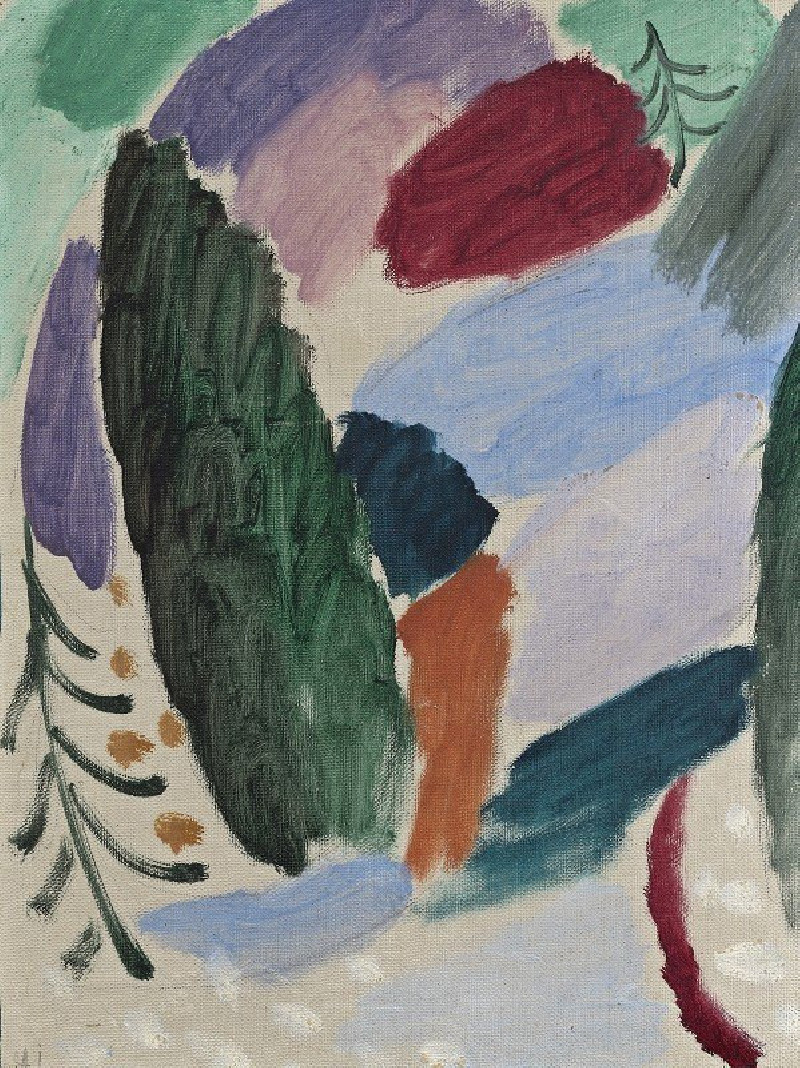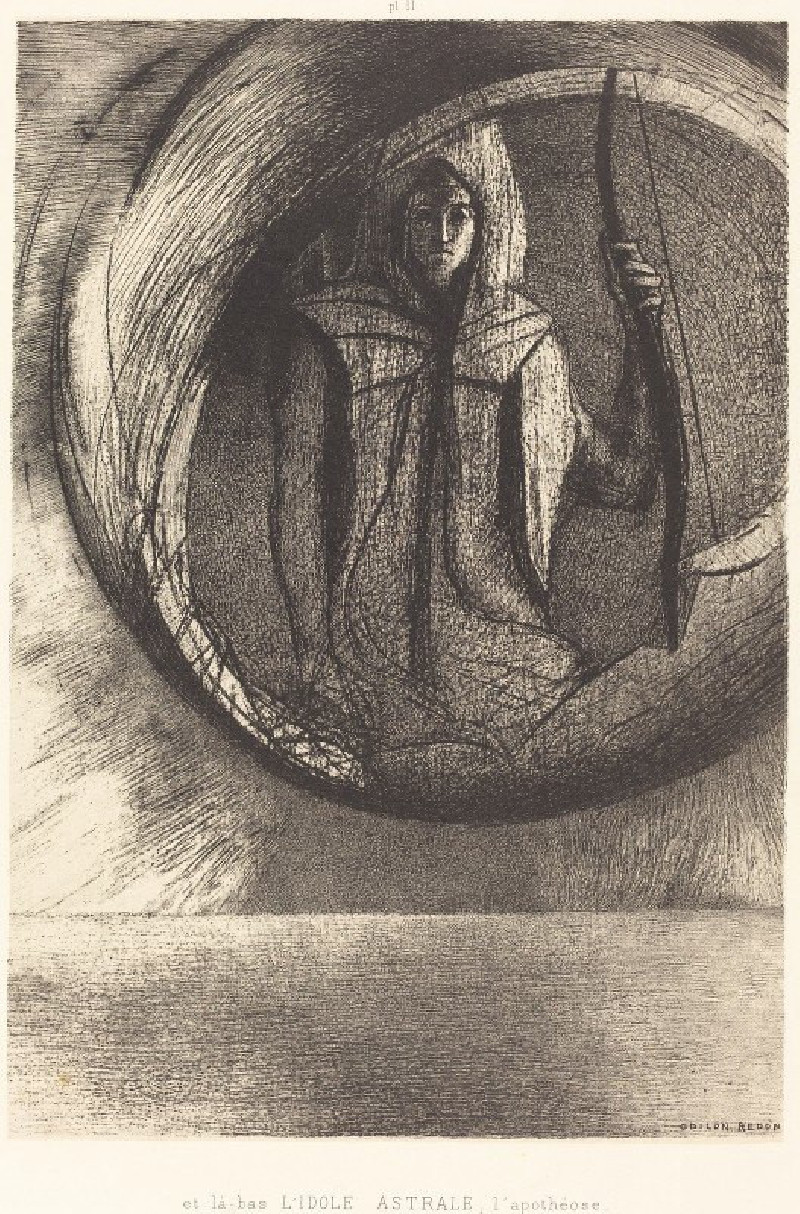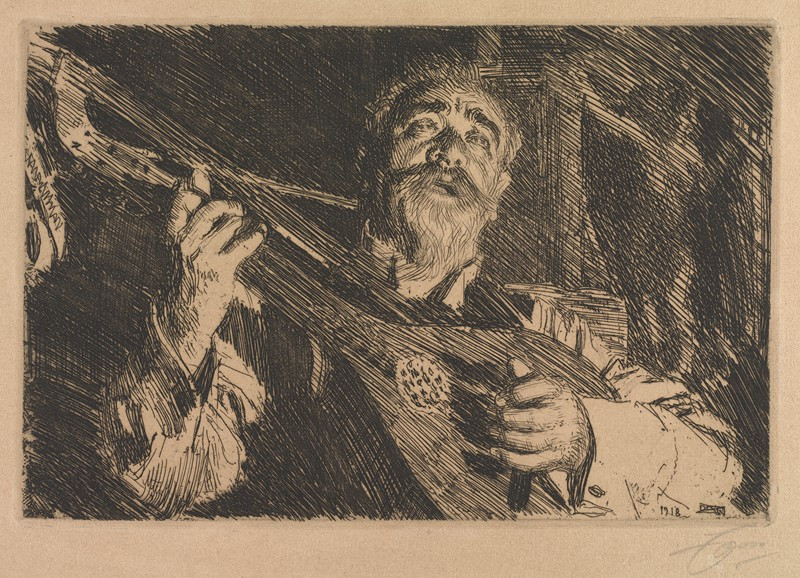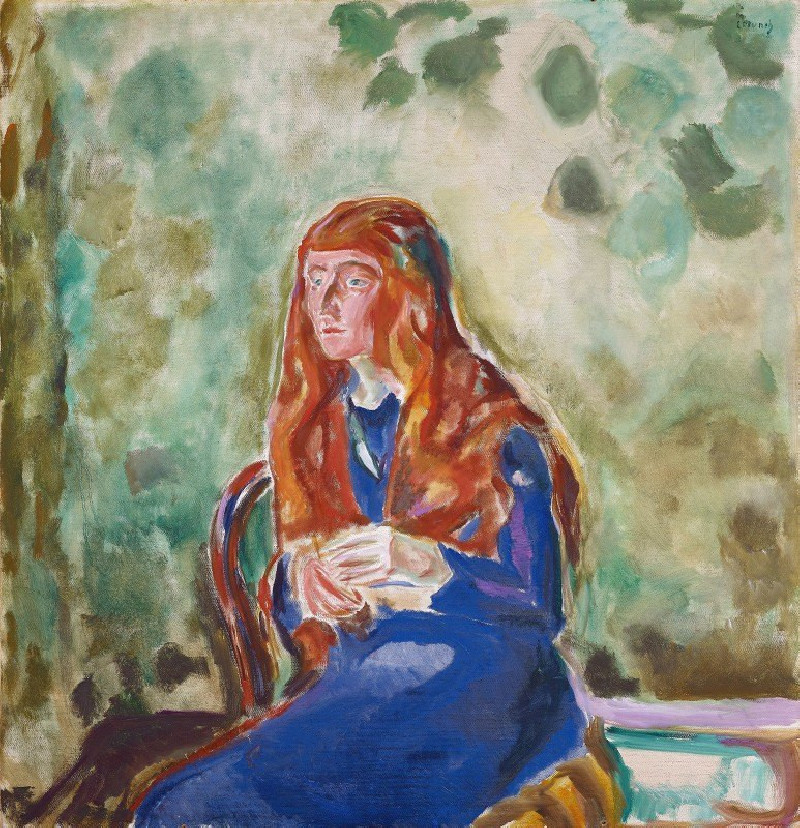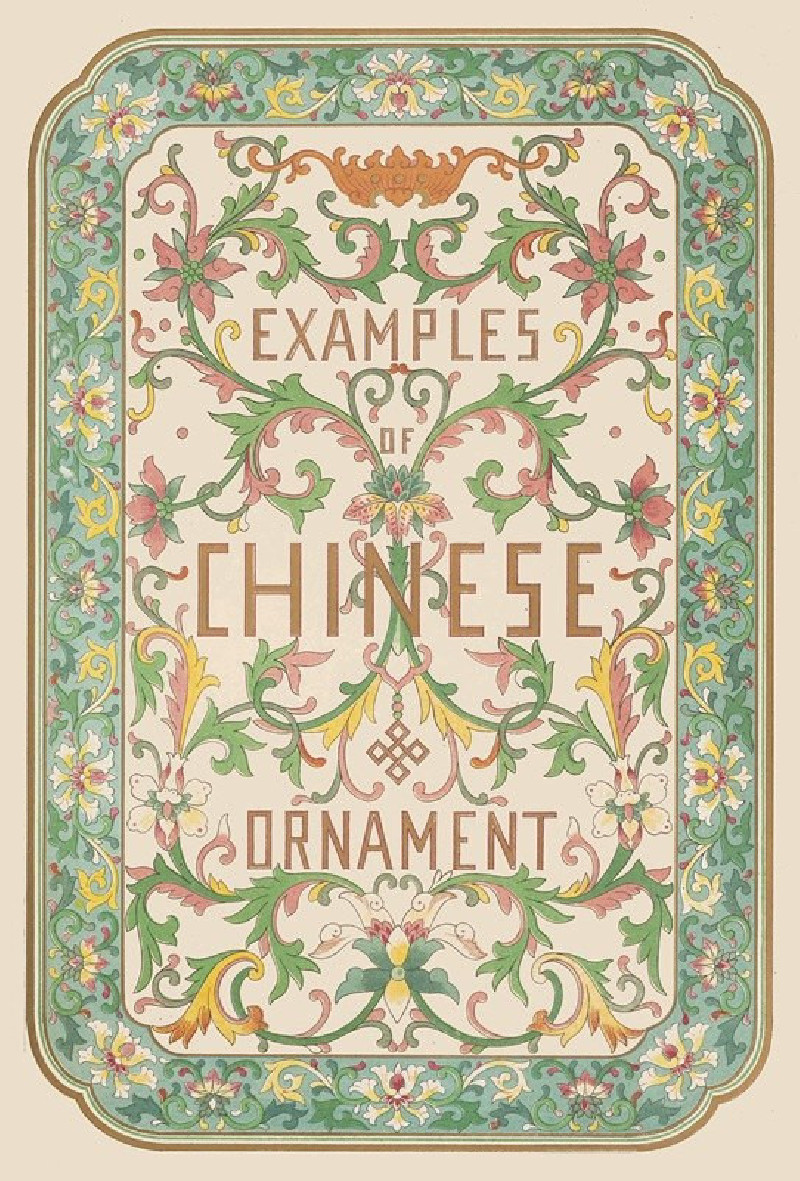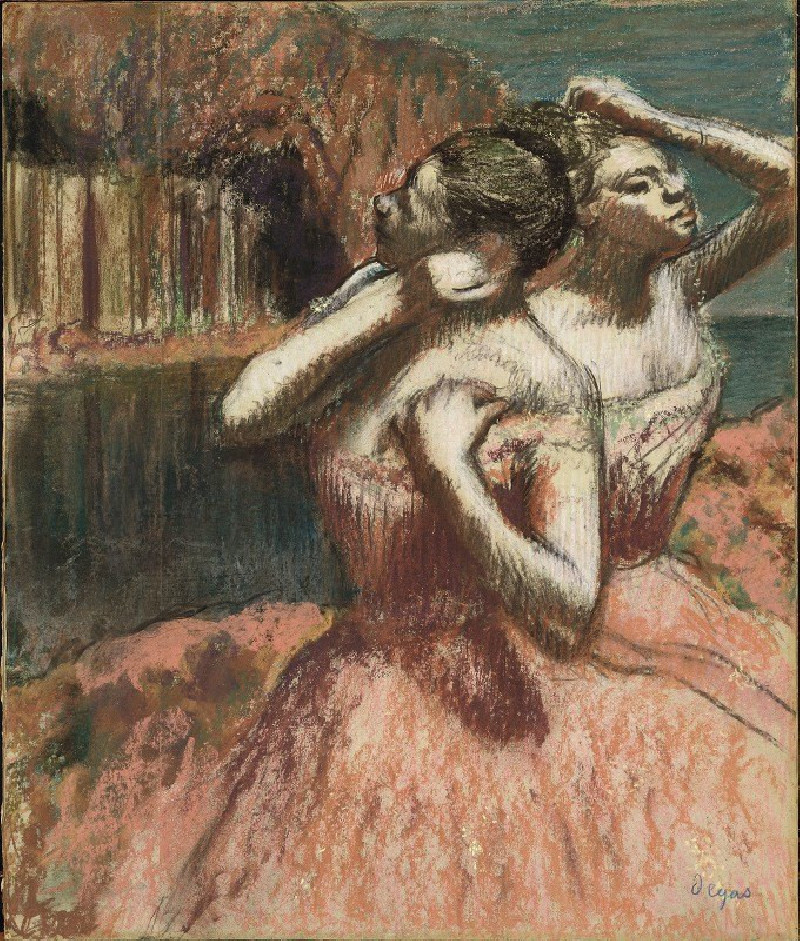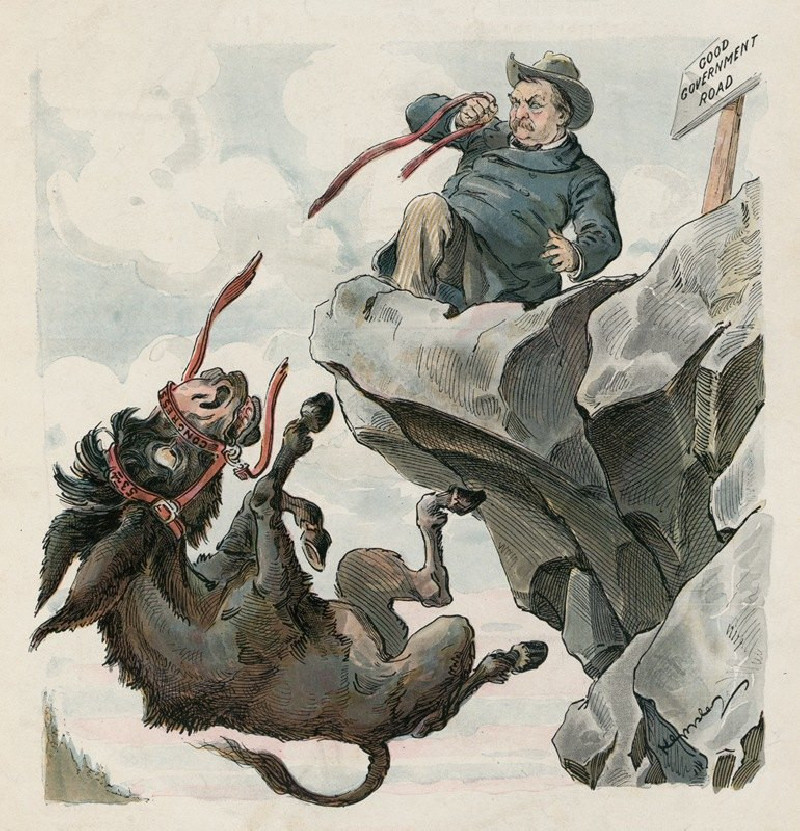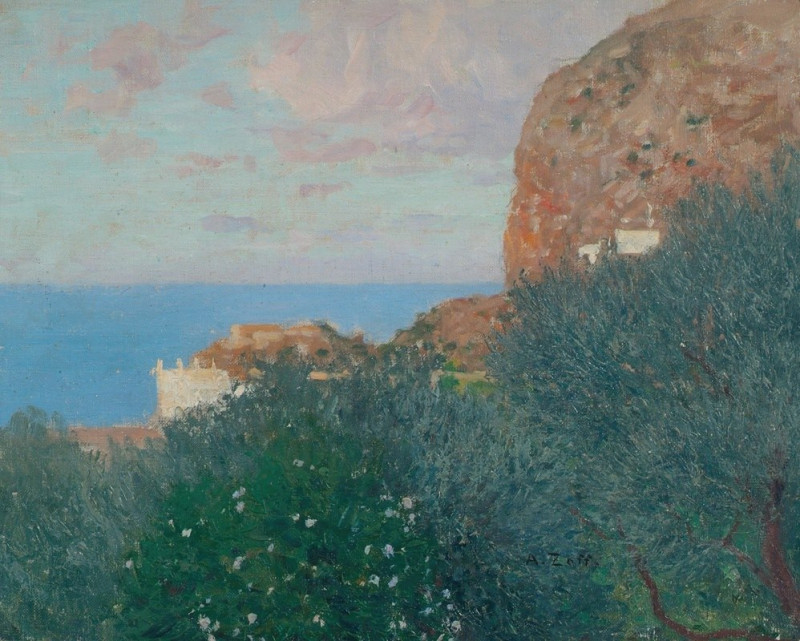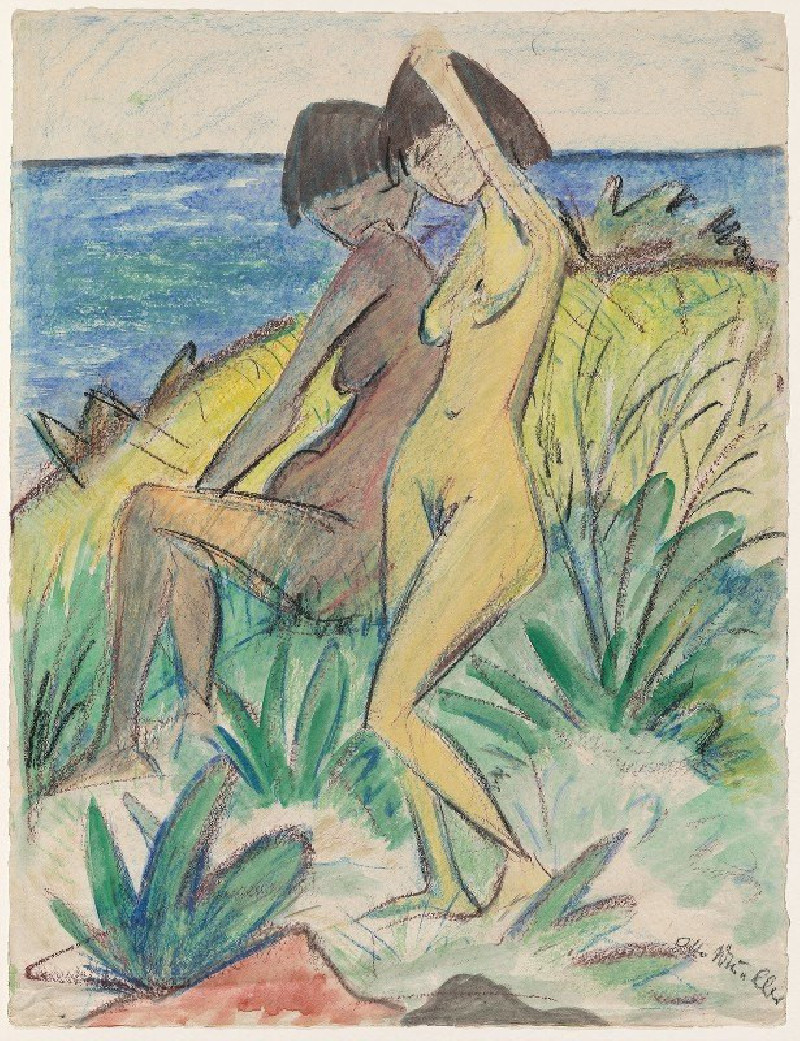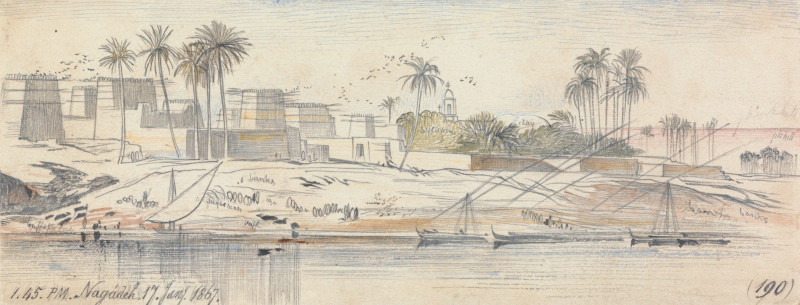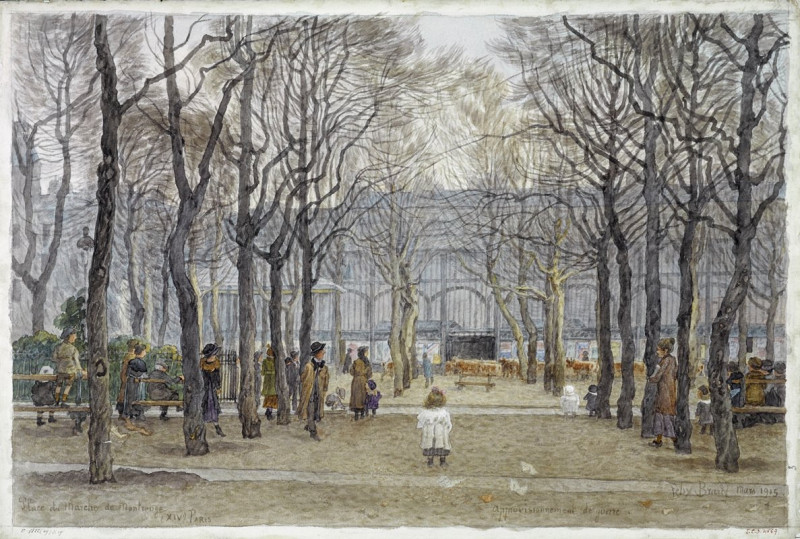Scène De Rue (1885)
Technique: Giclée quality print
Recommended by our customers
More about this artwork
We invite you to immerse yourself in Emile Bernard's 1885 painting, "Scène De Rue," a captivating depiction of everyday life that transcends the ordinary through its unique artistic execution. The painting portrays a street scene characterized by its textured brushwork and muted colors, capturing the essence of the 19th-century urban landscape.In "Scène De Rue," Bernard illustrates a seemingly casual moment on a wide boulevard. The central composition features several figures: a pair of men and a solitary woman, each absorbed in their respective directions. The men appear to be in mid-conversation, depicted in striking dark silhouettes against a lighter background, while the woman, donned in traditional attire, adds a contrast with her back to the viewer, enhancing the painting's sense of depth and realism.The road, highlighted by shadowy traces and stray patches of sunlight, leads the viewer's eye through the canvas, anchored by a quaint streetlamp towards the foreground. This element not only serves as a focal point but also symbolizes the intersection of human paths, perhaps a metaphor for the crossing of lives in the urban milieu.Bernard's brushwork is expressive, with visible strokes that texture every surface, from the cobblestone path to the foliage and architectural forms faintly visible in the background, evoking the vibrancy and dynamism of city life. The color palette, while subdued, features touches of warmth in the yellows and reds, suggesting the sunlight's dance across the urban canvas."Scène De Rue" encompasses both the simplicity of daily routines and the complex interplay of light, shadow, and form, inviting viewers to contemplate the quieter, often overlooked moments of urban life through Bernard's introspective vision.
Delivery
Returns
Émile Henri Bernard (28 April 1868 – 16 April 1941) was a French Post-Impressionist painter and writer, who had artistic friendships with Vincent van Gogh, Paul Gauguin and Eugène Boch, and at a later time, Paul Cézanne. Most of his notable work was accomplished at a young age, in the years 1886 through 1897. He is also associated with Cloisonnism and Synthetism, two late 19th-century art movements. Less known is Bernard's literary work, comprising plays, poetry, and art criticism as well as art historical statements that contain first-hand information on the crucial period of modern art to which Bernard had contributed.



